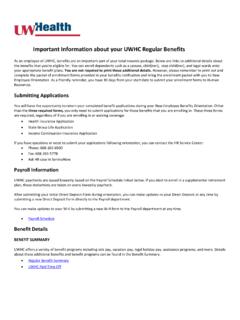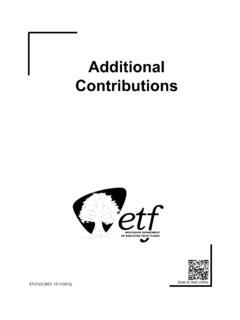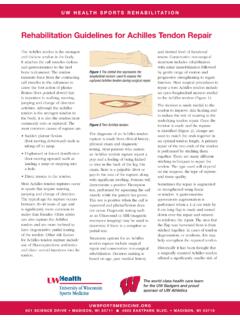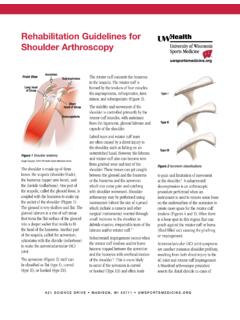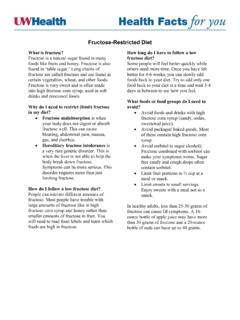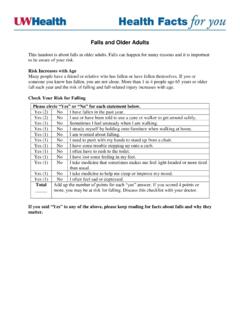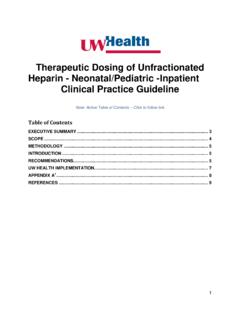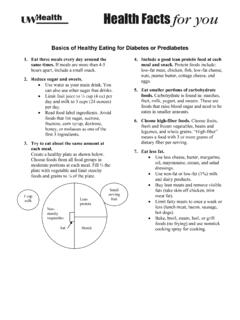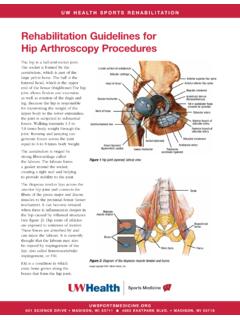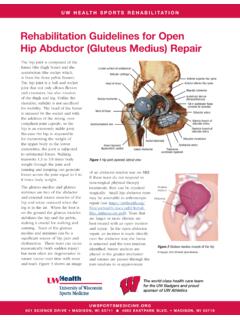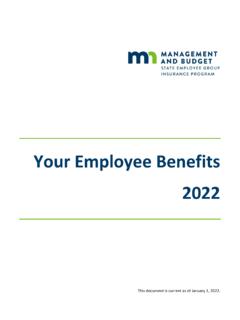Transcription of Venous Thromboembolism Prophylaxis Pediatric Inpatient ...
1 Venous Thromboembolism Prophylaxis - Pediatric - Inpatient Clinical Practice Guideline Note: Active Table of Contents Click each header below to jump to the section of interest Table of Contents INTRODUCTION ..3 SCOPE ..3 RECOMMENDATIONS ..3 METHODOLOGY ..7 COLLATERAL TOOLS & RESOURCES ..9 APPENDIX A. Pediatric VTE Prophylaxis RISK FACTORS AND ASSESSMENT .. 10 APPENDIX B. Pediatric Venous Thromboembolism Prophylaxis DECISION FLOW CHART .. 12 REFERENCES .. 13 Copyright 2018 University of Wisconsin Hospitals and Clinics Authority.
2 All Rights Reserved. Printed with : Lee Vermeulen, Last Revised: 2/12/2019. Contact for previous versionsContent Expert: Monica Bogenschutz, PharmD, BCPS, BCPPS Pharmacy for Changes: Anne Rose, PharmD Pharmacy Author: Yafang Cheng, PharmD Workgroup Members: Amy Culp, PharmD, BCPPS Pharmacy Monica Bogenschutz, PharmD, BCPS, BCPPS Pharmacy Jessica Bergsbaken, PharmD, BCPPS Pharmacy Anne Rose, PharmD Pharmacy Joshua Vanderloo, PharmD, BCPS Pharmacy Reviewers: Carol A.
3 Diamond, MD Pediatric Hematology/Oncology Michael Wilhelm, MD Pediatric Intensive Care Unit Committee Approvals: Inpatient Anticoagulation Subcommittee: December 2018 Pharmacy & Therapeutics Committee: January 2019 Copyright 2018 University of Wisconsin Hospitals and Clinics Authority. All Rights Reserved. Printed with : Lee Vermeulen, Last Revised: 2/12/2019. Contact for previous versionsIntroduction Pediatric Venous Thromboembolism (VTE) is a life-threatening condition associated with increased morbidity, mortality, duration of hospital stay, and health care It is increasingly being recognized as a complication of contemporary health care in the Pediatric Estimated annual incidence among hospitalized Pediatric patients is upwards of 60 events per 10,000 admissions.
4 Neonates are at the greatest risk of Thromboembolism , with a second peak in incidence noted during puberty and adolescence. Although far less common in children than adults, several underlying medical conditions place children at risk for developing VTE. One of the greatest risks for VTE in children is the insertion of central Venous catheters. Additionally, other acquired conditions frequently associated with VTEs in children include infection, trauma, surgery, and immobility. There is no standardized and validated thromboprophylaxis risk tool established in the Pediatric population.
5 These guidelines provide recommendations on the evaluation of patients at risk for VTE based on identified risk factors as well as appropriate VTE Prophylaxis modalities. Scope Intended Users: Physicians, advanced practice providers, pharmacists, and nurses who provide care to hospitalized Pediatric patients Objective: To provide recommendations and guidance for the preventative treatment of Venous Thromboembolism (VTE) in hospitalized Pediatric patients. Target Population: Any Pediatric Inpatient who is 6 months of age or older with the intent to remain hospitalized for greater than 24 hours.
6 The recommendations for pharmacologic strategies used to prevent VTE would apply to Pediatric patients receiving either unfractionated heparin (UFH) or low molecular weight heparin (LMWH). Patients younger than 6 months of age are excluded from this guideline due to insufficient data to sufficiently describe use in this population. This guideline is not intended to provide recommendations for the treatment of VTE. Recommendations 1. Prevention of VTE in hospitalized Pediatric patients3 All hospitalized patients older than 6 months should be evaluated for both bleeding and VTE risk within 24 hours of admission, upon transferring level of care, and periodically during hospital stay (every 48-72 hours).
7 4-6 (UW health GRADE Low quality evidence, strong recommendation) Documentation of initial bleeding and VTE risk should occur in the medical record within 24 hours of hospital admission or postsurgical procedure. (UW health GRADE Very low quality evidence, strong recommendation) Reassessment of bleeding and VTE risk should occur in the medical record when there is a change in level of care. (UW health GRADE Very low quality evidence, strong recommendation) 2. Evaluation of Bleeding Risk There is no universally validated model to assess bleeding risk with the use of chemical DVT Prophylaxis .
8 Recommendations for specific factors associated with increased bleeding risk are included in Table (UW health GRADE Very low quality evidence, strong recommendation) If patient meets at least one of the following criteria of the Chemical Prophylaxis NOT Recommended list in Table 1, avoid chemical Prophylaxis as risk outweighs benefit. (UW health GRADE Very low quality evidence, strong recommendation) Copyright 2018 University of Wisconsin Hospitals and Clinics Authority. All Rights Reserved.
9 Printed with : Lee Vermeulen, Last Revised: 2/12/2019. Contact for previous If patient meets at least one of the following criteria in the Consider Avoiding Chemical Prophylaxis list in Table 1, consider avoiding chemical Prophylaxis . (UW health GRADE Very low quality evidence, conditional recommendation) Consider consulting hematology for recommendations if patient considered at high risk for VTE, but also with high bleeding Uncontrolled hypertension is defined as systolic or diastolic blood pressure greater than 95th percentile for age, height, and Coagulopathy is defined as INR > , APTT >44 seconds, fibrinogen <100 g/dL, or platelet <50,000 Table 1.
10 Bleeding Risk Factors Chemical Prophylaxis NOT Recommended Consider Avoiding Chemical Prophylaxis Intracranial hemorrhage Intracranial mass Brain ischemia/acute stroke Recent lumbar puncture (<24 hours ago) Active bleeding Coagulopathy Recent thrombolytic therapy (<24 hours) Neurosurgical procedure Pelvic fracture within past 48 hours Uncontrolled hypertension Recent aspirin or antiplatelet use (<5-7 days ago) 3. Evaluating VTE risk in medical, surgical, and trauma patients There is no universally validated model to assess VTE risk in medical, surgical, or trauma patients.
